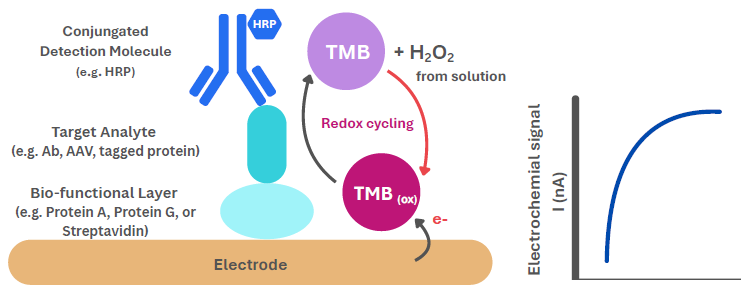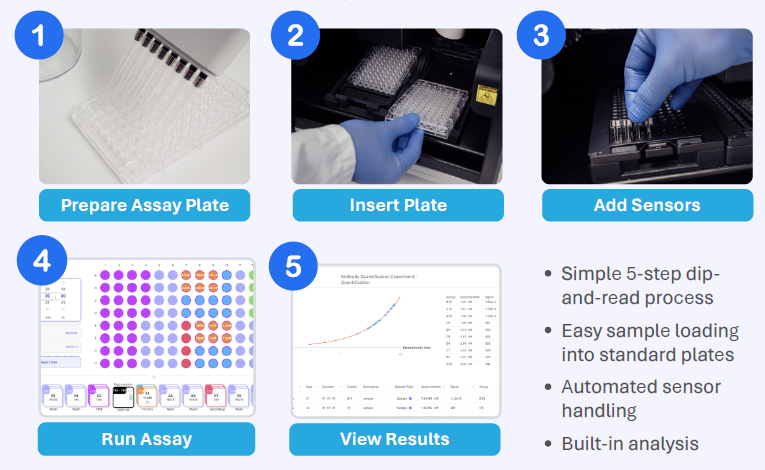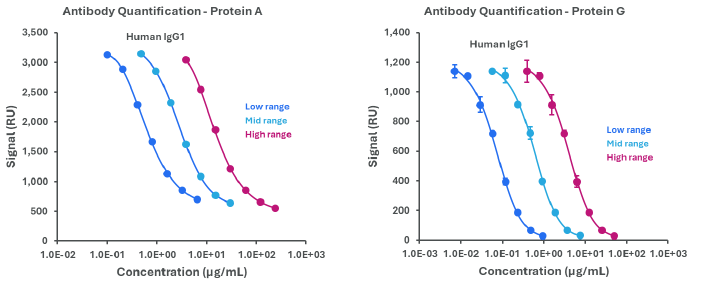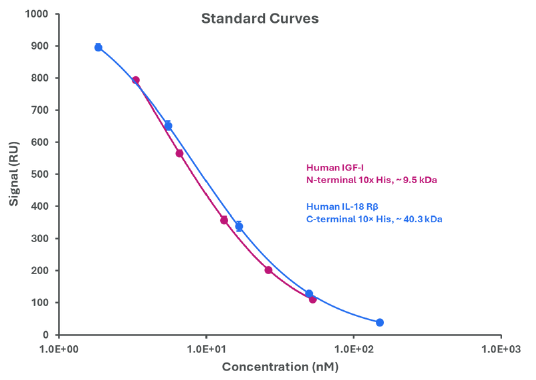Sponsored Content by AbselionReviewed by Olivia FrostNov 28 2025
Protein quantification is critical in biologics research and development. However, current methods such as ELISA, BLI, and SPR have complex workflows and can struggle with crude samples or early-stage screening. These limits drive up the need for platforms that combine quickness, ease of use, and resilience.
Overview of technology: What is RED?
Redox Electrochemical Detection (RED) is a sensor-based detection approach that generates an electrical signal through enzyme-mediated redox reactions, which is then monitored directly using electrode sensors.
- No optics or fluidics
- Designed to tolerate crude samples
- Signal readout is direct and automated
- Supports different assay formats tailored to target biology

Image Credit: Abselion
RED is applied on the Amperia™ platform, a compact benchtop platform built on patented sensor technology, with disposable dip-style sensors and prefilled assay plates.

Image Credit: Abselion
Workflow summary

Image Credit: Abselion
Applications and results
AAV capsid quantification

Image Credit: Abselion
- Strong correlation with manual and automated ELISA (R² = 1.00, 0.97)
- Quantitative curves across serotypes (AAV2, AAV5, AAV6, AAV8, AAV9)
- Robust performance across serotypes and assay runs
- Suitable for early-stage, minimally processed samples
Monoclonal antibodies (mAbs) quantification

Image Credit: Abselion
- Reliable quantification using Protein A and Protein G assays
- Reproducible standard curves across high, mid, and low ranges
- Compatible with several antibody species and subtypes
- Suitable for antibody quantification from discovery to process development
His-tagged protein quantification

Image Credit: Abselion
- Standard curves generated for His-tagged Human IGF-1 and IL-18 Rβ
- Reliable quantification of lysate-based samples
- Supports the assessment of protein expression levels
- Reproducible results across replicates
Discussion and future directions
Amperia™ uses Redox Electrochemical Detection (RED) to streamline protein measurement, removing the requirement for optics and fluidics. It produces consistent findings for targets like AAV, mAbs, and His-tagged proteins, even in crude samples.
It facilitates early screening and upstream workflows thanks to its small design, low training requirements, and target-specific assay formats. Ongoing development aims to broaden assay offerings and integrate with automated systems.
About Abselion
Abselion started in 2018, at that time under the name HexagonFab, in a small corner of a laboratory at the University of Cambridge.
We set out with the humble goal to make protein research simpler. Scientists should be able to pursue their passion for discovery and innovation, rather than spend their valuable time with tedious, manual tasks. With RED we had access to the ideal technology to create this product. A product that is so compact that it could fit on every bench, and so affordable that it is accessible to everyone. Over the years we have designed, built and tested our first product Amperia and we’re proud to introduce it to the world.
Sponsored Content Policy: News-Medical.net publishes articles and related content that may be derived from sources where we have existing commercial relationships, provided such content adds value to the core editorial ethos of News-Medical.Net which is to educate and inform site visitors interested in medical research, science, medical devices and treatments.